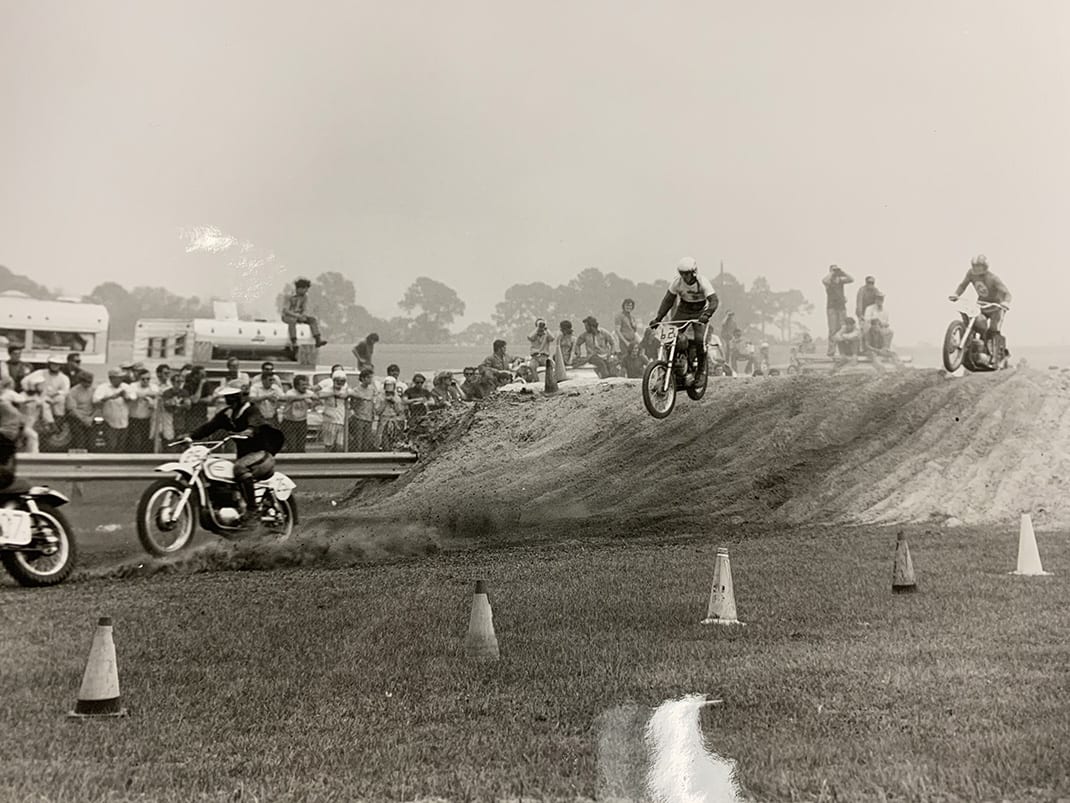Daytona Int’l Speedway is set to host the 50th annual Daytona Supercross, with the milestone event scheduled for March 7 at the World Center of Racing.
The course for the Daytona Supercross, which is the longest continuous Supercross race in America dating back to 1971, was designed by five-time event winner Ricky Carmichael for the 13th consecutive year.
Carmichael’s course design features a nod to the history of the Daytona Supercross and includes elements from past Daytona courses such as the over-the-wall jump, the Daytona tunnel jump and grass as a fourth racing surface. The Daytona logo will also be displayed in the center of the extended course.
“It was really important to bring back some of these old-school elements to the 50th annual Daytona Supercross,” Carmichael said. “Think of all the years and talent that has come through Daytona and the Daytona Supercross; we had to bring something back that was going to be special.”
Carmichael calls it “an honor” to design the grueling and challenging course for the Daytona Supercross.
“Being a fourth -generation Floridian, it’s so special to me to be a part of Daytona Supercross,” Carmichael said. “(This event) it’s always been close to my heart. I love going there. The fans are epic. The event is epic. It’s where the strong survive and I can’t wait to watch these guys battle it out.”
The first Daytona Supercross in 1971 would almost be unrecognizable to modern-day fans.
The track that first year was constructed in the grassy infield area of the International Horseshoe and the kink of the infield section of the road course. Daytona’s races even predate the AMA Supercross Series and, in fact, the early races were called motocross and were part of the then prestigious Florida Winter-Am Series.
During the era before MX training facilities, many of the top pros readied for the upcoming season by participating in the Winter-Am Series. Gary Bailey was one of those riders. He and his brother had track building experience, having built temporary motocross courses at Southern California’s Ascot Park.
Bill France came to Bailey at one of the Winter-Am races and asked him and fellow racer Jimmy Weinert if they thought a temporary motocross track could be built at the speedway.
“Jimmy and I went down to look at it,” Bailey recalled. “I walked around with Bill the whole time, looking at how we might build the track and Jimmy just sat on the wall. So, Bill asked me if I’d be interested in building it and I said, ‘Sure.’ He never said anything to Jimmy and Jimmy never said anything to him, so I ended up being the guy.”
Bailey had a rough concept in his mind, but when he arrived on the dawn of Bike Week 1971, he didn’t realize how few resources he’d be given to put the track together.
“They told me whatever they had on the property I could use,” Bailey said. “I asked if I could bring dirt in and they said, ‘If you can find it here you can use it.’ I found some piles of lime rock that they used to prep their roads with. I asked them how we were going to get the lime rock over to where we were to build the track and they told me they had a little tractor with a bucket. I asked them how I was going to shape the jumps and they said, ‘Well, you can use the tractor, or we have a motor grader. We use it to flatten out our roads around here.’ I said, ‘A motor grader? How am I supposed to build jumps with that?’
“So we started building and I told them I couldn’t shape the jumps very well and they said, ‘Well, we’ve got plenty of workers around here who don’t do much this time of year, so if you need the manpower, we’ve got it.’ So next thing I know we’ve got six guys out there with shovels and rakes. It was crazy.”
Click below to keep reading.
